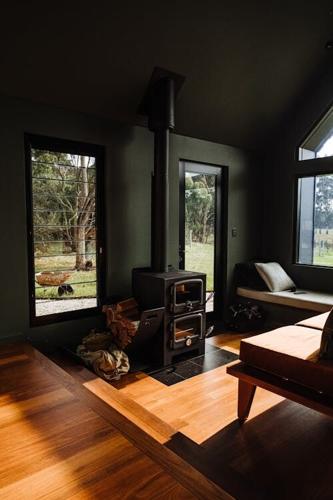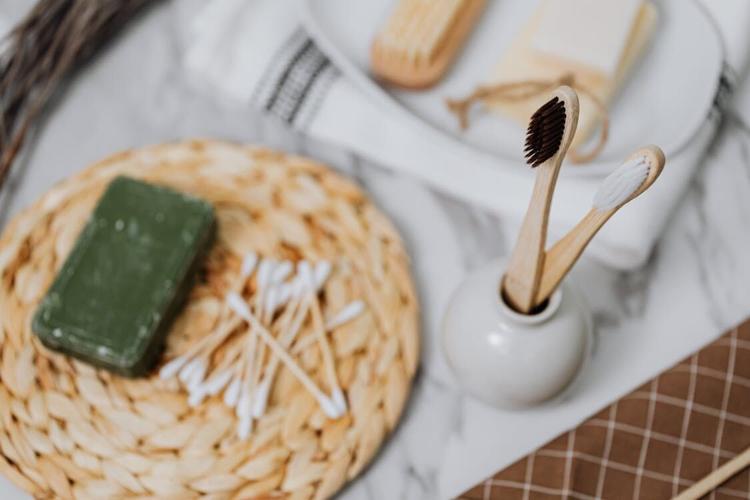When it comes to designing a home, there are probably lots of things that you might be keen to make sure you are thinking of and getting right. And one of the main ones is usually that you are doing all you can to design a sustainable home. This is obviously more important than ever, and it has never been more pressing to ensure that a home is as sustainable as possible, but how can you make sure you are actually doing this right?

That might be harder than you think, but as long as you keep a few things in mind you should be able to make it a reality. Let’s take a look now at some of the main ideas you might want to make use of as you try to design your very own sustainable home this year.
Start With Passive Design Principles
Before you start automatically investing in high-tech solutions, you may want to consider making use of some more passive design principles. It is actually possible to create a much more sustainable home by simply making use of some of these principles, meaning you have to do less and spend less in order to achieve the same kind of result. In other words, you are effectively trying to get the fundamentals right before you think about doing all the high-tech wizardry.
Passive design is all about using the local climate and site orientation to reduce your need for artificial lighting, heating and cooling. For instance, if you position living spaces towards the sun (south-facing in the Northern hemisphere), you are going to maximize light and heat gain all at once. You can also use materials like concrete and brick that absorb and then slowly release heat to help regulate indoor temperatures. And you can be a little clever about your window placement to ensure you have cross ventilation with natural airflow.
Those are just examples, but as you can see using passive design principles can be hugely powerful and helpful in creating a home that is truly sustainable a lot more easily.

Choose Your Materials Carefully
We have already mentioned thermal mass materials in passing, but in general you need to make sure that you are choosing your materials very carefully if you want to make your home as sustainable as possible. Modern sustainable homes tend to have materials in use that are renewable, recycled or at least have a low carbon footprint in general. If you are using these kinds of materials above all, that is really going to be helpful and will make a huge difference.
So you may want to make use of reclaimed wood, recycled metal and low-VOC paints, for instance, all of which are popular and easy to get hold of - as well as being quite affordable compared to a lot of other options. Wherever possible, you should always use locally-sourced materials, as this helps to reduce emissions from transportation. And you may even want to use modular or prefabricated elements, which create less waste as a rule and can also allow for better quality control - a real win-win.
As you can see, choosing your materials carefully can make a huge difference to how sustainable your home is, so this is a major part of the whole process.

Install Energy-Efficient Systems
It is now easier and cheaper than ever to make use of energy-efficient systems, and it’s one of the best ways to make sure that your home is genuinely more sustainable. Some of these are particularly powerful and are such no-brainers that you have probably already assumed you are going to make use of them. A good example of that would be having solar panels installed, and it is definitely worth getting in touch with a local solar company who can provide you with a quote for that.
It’s not only solar, however. You might also want to make use of heat pumps, for instance, which can be very effective and are one of the most efficient systems around. These can be used for both space heating and water heating and are much more efficient than traditional gas systems.
Remember too that installing smart thermostats and the like can help you to keep your energy usage down, so that is something to consider at the design stage as well.
Think Water-Wise
Your water consumption is another really valuable part of being sustainable, and anything you can do to ensure you are keeping your water consumption low is always going to be really important for you to consider. Again, if you can include this in the very design of the home that is absolutely going to make a huge difference as well. In fact, water efficiency should be considered a core element of sustainable design and practice, especially in drought-prone areas but also generally anywhere.

To that end, install low-flow fixtures and features, dual-flush toilets and use greywater systems to recycle water for irrigation. You may also want to set up a system to collect rainwater from the roof for use in the garden or for flushing toilets, depending on your local regulations if possible. And you should make sure that you are choosing native landscaping to help reduce your irrigation needs in the first place.
Minimize Construction Waste
It’s not just about the finished product, but how you get there. And if you want to make sure you are really doing your part to be as sustainable as possible, you will find that reducing the waste produced during construction is a really important part of this. There are lots of ways in which you can do this, and it’s the kind of thing that requires a lot of conscious attention if you are going to do it right. However, if you can do that, you will find it really does help you out a lot. And all in all, you are going to have a much more sustainable home project.







(0) comments
We welcome your comments
Log In
Post a comment as Guest
Keep it Clean. Please avoid obscene, vulgar, lewd, racist or sexually-oriented language.
PLEASE TURN OFF YOUR CAPS LOCK.
Don't Threaten. Threats of harming another person will not be tolerated.
Be Truthful. Don't knowingly lie about anyone or anything.
Be Nice. No racism, sexism or any sort of -ism that is degrading to another person.
Be Proactive. Use the 'Report' link on each comment to let us know of abusive posts.
Share with Us. We'd love to hear eyewitness accounts, the history behind an article.